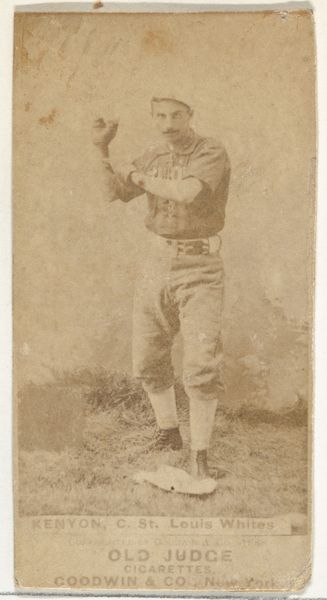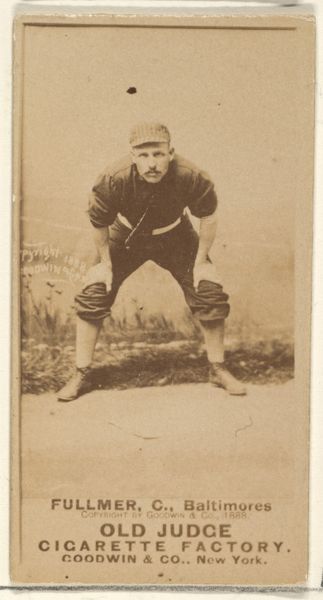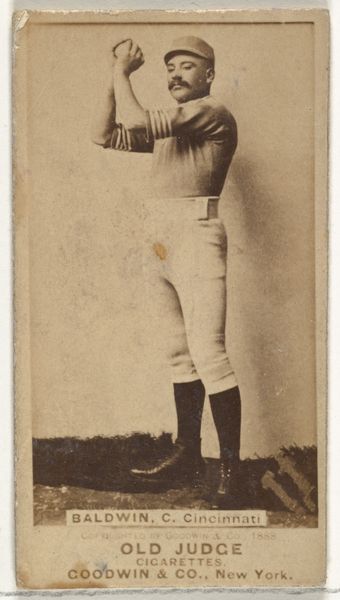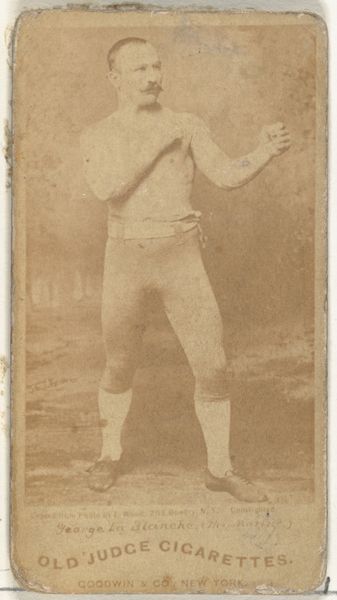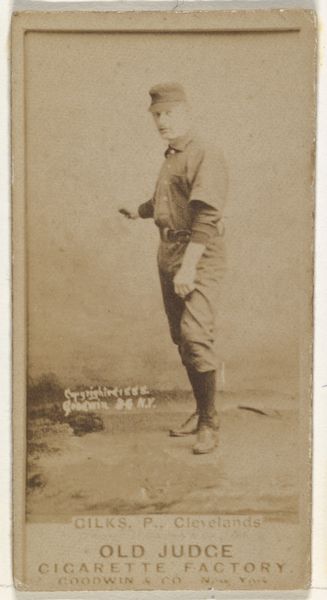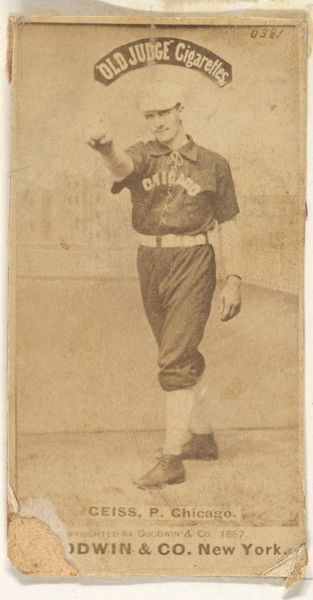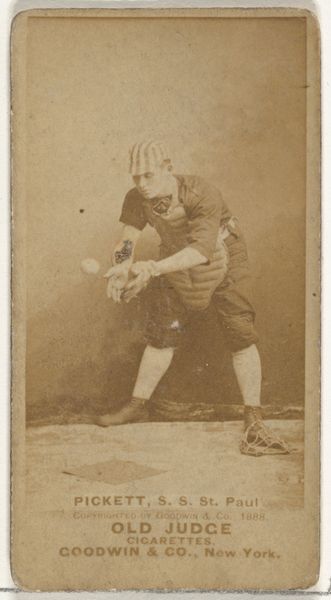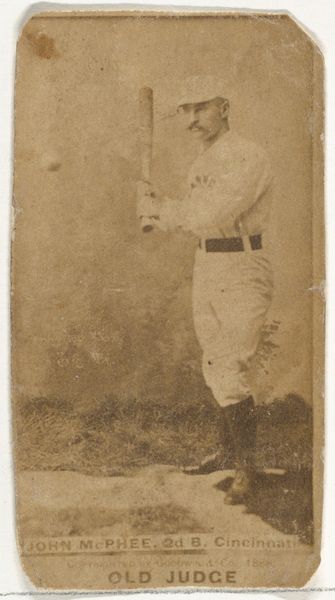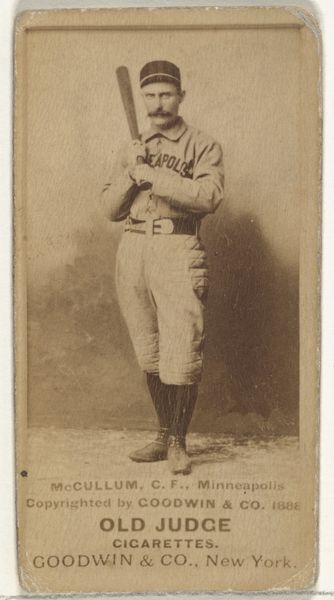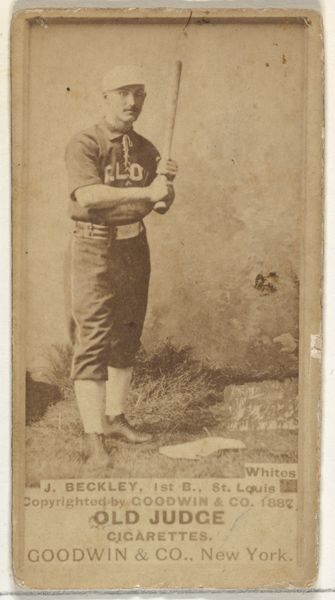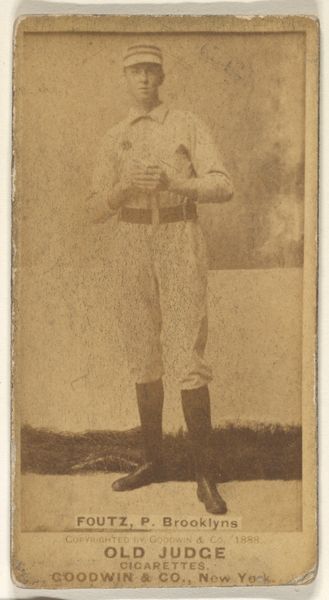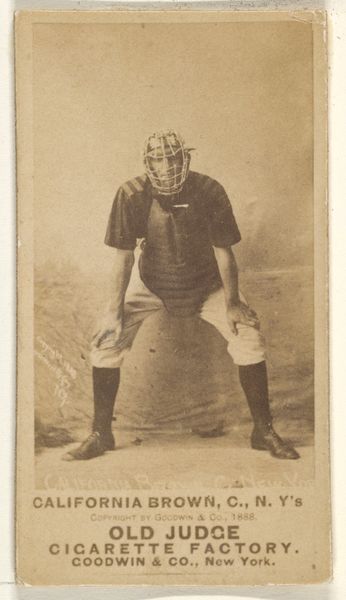
Oliver Wendell "Patsy" Tebeau, 3rd Base, Cleveland, from the Old Judge series (N172) for Old Judge Cigarettes 1889
0:00
0:00
print, photography, gelatin-silver-print
#
portrait
# print
#
baseball
#
photography
#
gelatin-silver-print
#
men
Dimensions: sheet: 2 11/16 x 1 3/8 in. (6.9 x 3.5 cm)
Copyright: Public Domain
Curator: This gelatin-silver print, dating back to 1889, is from the Old Judge series (N172) and features Oliver Wendell "Patsy" Tebeau, a third baseman for Cleveland. These were produced by Goodwin & Company as baseball cards inserted in Old Judge Cigarettes packs. Editor: There’s something quite stark about this portrait. The neutral tones give it a somewhat timeless feel. It is really intriguing how a mundane cigarette insert attained to be displayed in a museum. Curator: The fact that this was a promotional item is quite interesting, especially when we consider its status today, exhibited at The Met. You see a collision between commerce and artistry here. The company capitalized on baseball's burgeoning popularity to sell more cigarettes. The material, a simple gelatin-silver print, was perfect for mass production, allowing for a widespread distribution. It democratized portraiture in a way, bringing images of heroes to the masses. Editor: Yes, and consider what Tebeau himself represented. A player, certainly, but the image elevates him to near-mythic status through the ritual of collecting. Note how deliberately the subject is displayed, gripping the bat with a sense of almost holy concentration: baseball becomes an emblem, a visual shortcut to broader notions of American identity, industry, and competitive spirit in the late 19th century. It even subtly conveys ideals of physical fitness which might seem ironic considering its connection to the cigarette trade. Curator: And think about how this reflects the player's status. This isn't just a baseball card; it's a document of celebrity, but also an index to manufacturing and distribution networks in that era. It also provides an interesting view into work relations in printing during the 1890s. Who were the photographers and printers who mass produced these cards? Editor: The choice to depict Tebeau as almost meditative speaks volumes about cultural aspirations as well, which tells more than mere sport’s celebration. There is some very palpable longing embedded there for an idealized version of masculinity and national character, don't you think? Curator: Indeed, a convergence of sport, commerce, and self-fashioning, printed for distribution in millions of cigarette packs. It's really thought provoking to have access to an artifact of material culture that encapsulates these relations so powerfully. Editor: For me, the image endures because it offers this potent symbolic glimpse into an entire era, anxieties, ideals and all.
Comments
No comments
Be the first to comment and join the conversation on the ultimate creative platform.
